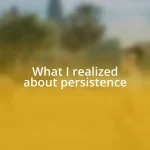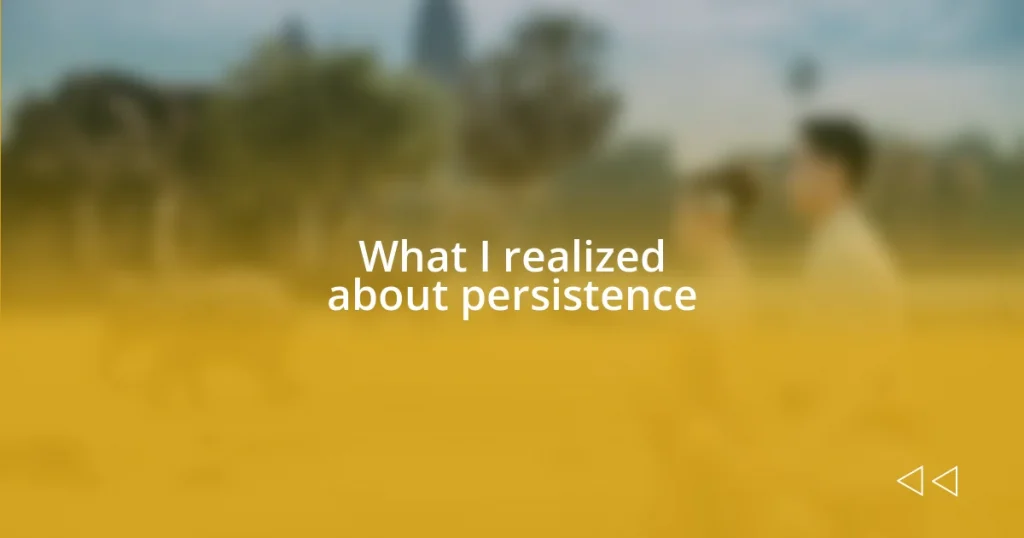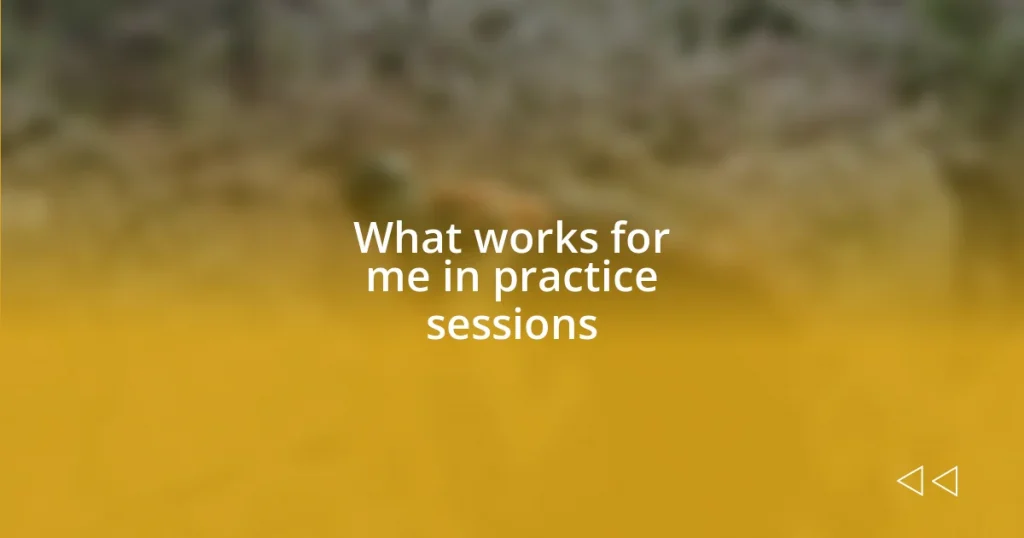Key takeaways:
- Persistence is essential for personal growth and building confidence, enabling individuals to overcome challenges and discover hidden strengths.
- Key traits of persistent people include resilience, goal-orientation, adaptability, tenacity, and self-motivation, all of which contribute to sustained effort despite obstacles.
- Measuring persistence progress through milestones, journaling, and feedback reinforces commitment and helps individuals recognize their journey and accomplishments.
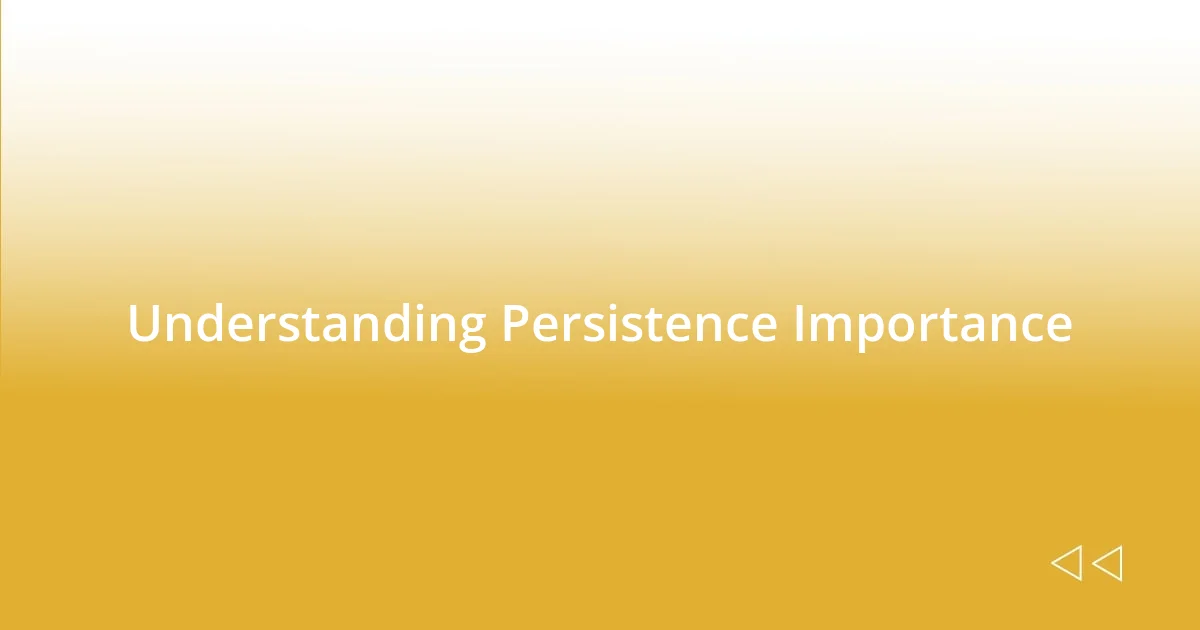
Understanding Persistence Importance
Persistence is often the unrecognized key to achieving our goals. I remember a time when I was wrestling with a challenging project, the kind that made me question my abilities. I thought, “Why should I keep pushing when it feels so impossible?” But every time I chose to persevere, I discovered new strengths I didn’t know I had.
It’s astonishing how persistence shapes our character. When I faced setbacks, instead of crumbling, I learned to adapt and find creative solutions. Have you ever noticed how the moments of struggle often reveal our true selves? It’s like a test of resilience that prepares us for even greater challenges ahead.
Understanding the importance of persistence also means recognizing its role in building confidence. I once pursued a skill that seemed out of reach, and each incremental success fueled my determination. When we persist, we not only inch closer to our dreams, but we also gain a profound sense of self-belief that propels us forward. Isn’t that empowering?
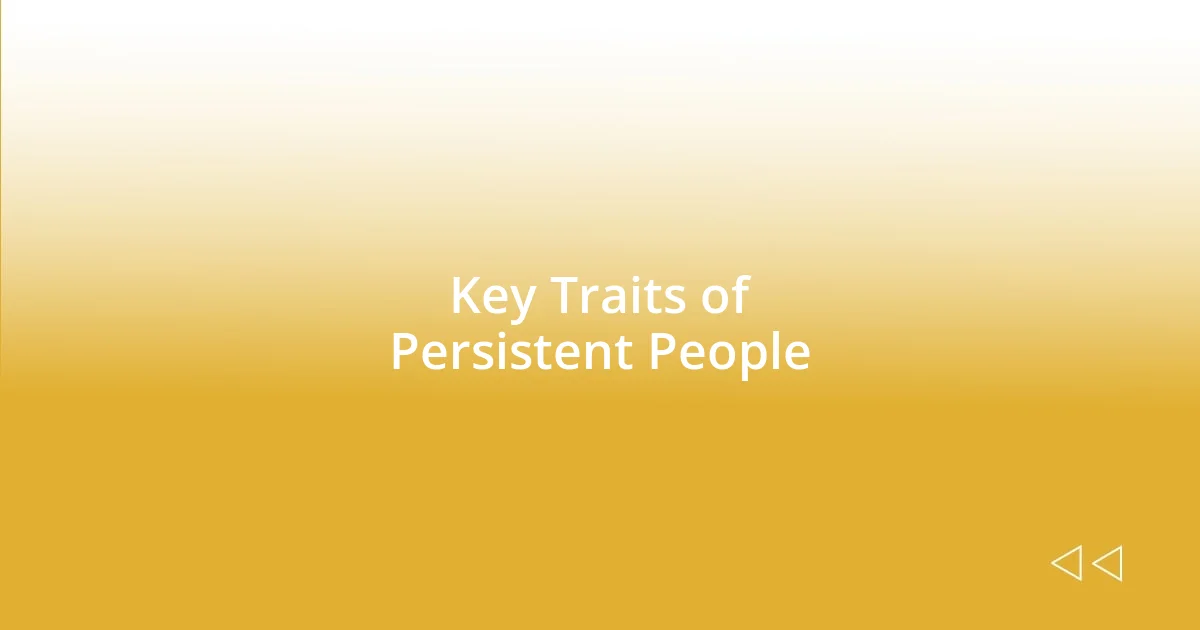
Key Traits of Persistent People
Persistent individuals often share certain traits that set them apart from the rest. For instance, they tend to maintain a positive outlook, even in the face of adversity. I recall a friend who aimed to transition careers. Instead of being daunted by the setbacks, he viewed each hurdle as a lesson. This unwavering optimism helped him stay focused and eventually achieve his goal.
Here are some key traits of persistent people:
- Resilience: They bounce back from failures without losing steam.
- Goal-orientation: They set clear, achievable objectives and continually work towards them.
- Adaptability: When faced with obstacles, they adjust their strategies instead of giving up.
- Tenacity: They don’t easily back down, demonstrating a stubborn determination to succeed.
- Self-motivation: They often inspire themselves from within, relying less on external validation.
I’ve also noticed how strong discipline is a hallmark of persistence. There’s nothing quite like setting aside time each day, even when it feels mundane, to work on something meaningful. I remember logging early morning hours to prepare for a certification exam while most were enjoying their sleep. It wasn’t always easy, but the tiny victories along the way made the sacrifices worth it.
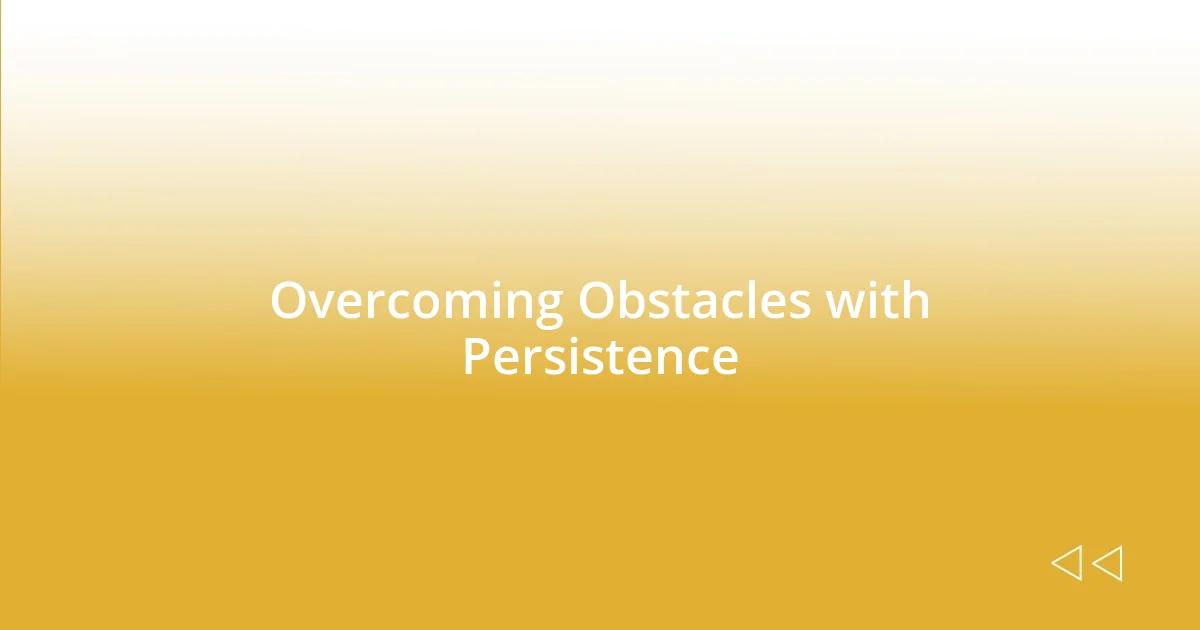
Overcoming Obstacles with Persistence
Overcoming obstacles requires not just effort, but relentless persistence. I’ve often found myself in situations that seemed insurmountable. For example, during my first marathon training, I faced recurring injuries that made me wonder if I should just give up. Each time I chose to push through those tough days, I learned to listen to my body and adapt my training. That persistence not only helped me complete the marathon but also taught me about resilience and the rewards of perseverance.
Sometimes, the path gets even tougher, and that’s where persistence becomes crucial. There was a project at work that felt like an uphill battle. It seemed like every avenue I explored hit a dead end. Yet, I decided to approach the challenge from different angles, brainstorming creative alternatives. Each small breakthrough built my confidence and allowed me to see the light at the end of the tunnel. It was a reminder that every setback is an opportunity to learn and grow.
The joy of overcoming obstacles through persistence cannot be overstated. I recall a time when I was learning to play the guitar. Progress felt slow, and there were days when I doubted my abilities. But, I continued to practice, even when my fingers ached, and eventually, I found myself able to play my favorite songs. That sense of accomplishment transformed my frustration into motivation, proving to me that persistence truly pays off.
| Key Concept | Description |
|---|---|
| Learning from Setbacks | Persistent individuals view obstacles as opportunities to learn and improve. |
| Adaptation | They adjust their strategies in response to challenges rather than giving up entirely. |
| Building Confidence | Every success, no matter how small, boosts self-belief and fuels continued effort. |
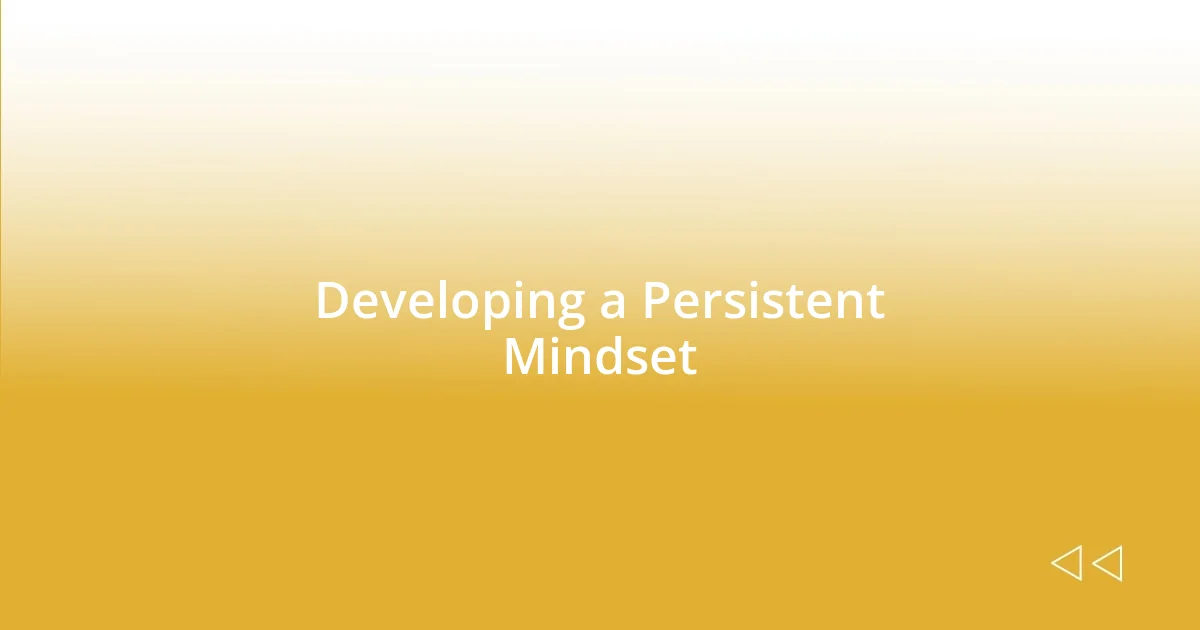
Developing a Persistent Mindset
Developing a persistent mindset starts with embracing each challenge as a stepping stone rather than a stumbling block. I remember when I started a side project that seemed overwhelming; there were countless late nights filled with frustration. Thinking back, I realize that my willingness to confront those obstacles head-on forged a habit of persistence that I carry with me today.
A key aspect of nurturing persistence is cultivating self-discipline. There were times during my journey where I felt like skipping my evening practice sessions or pushing off difficult tasks until tomorrow. But I’d often ask myself: what would that short-term comfort cost me in terms of long-term goals? It’s a powerful question that kept me committed, reminding me that every small effort is a building block toward greater achievements.
Moreover, seeking support from others can be game-changing. In the early days of my writing, I surrounded myself with like-minded individuals who shared similar aspirations. Sharing struggles and celebrating small victories together created a supportive community. I learned that persistence flourishes not just in solitude, but in a network of encouragement and accountability, making the journey feel less daunting and more rewarding.
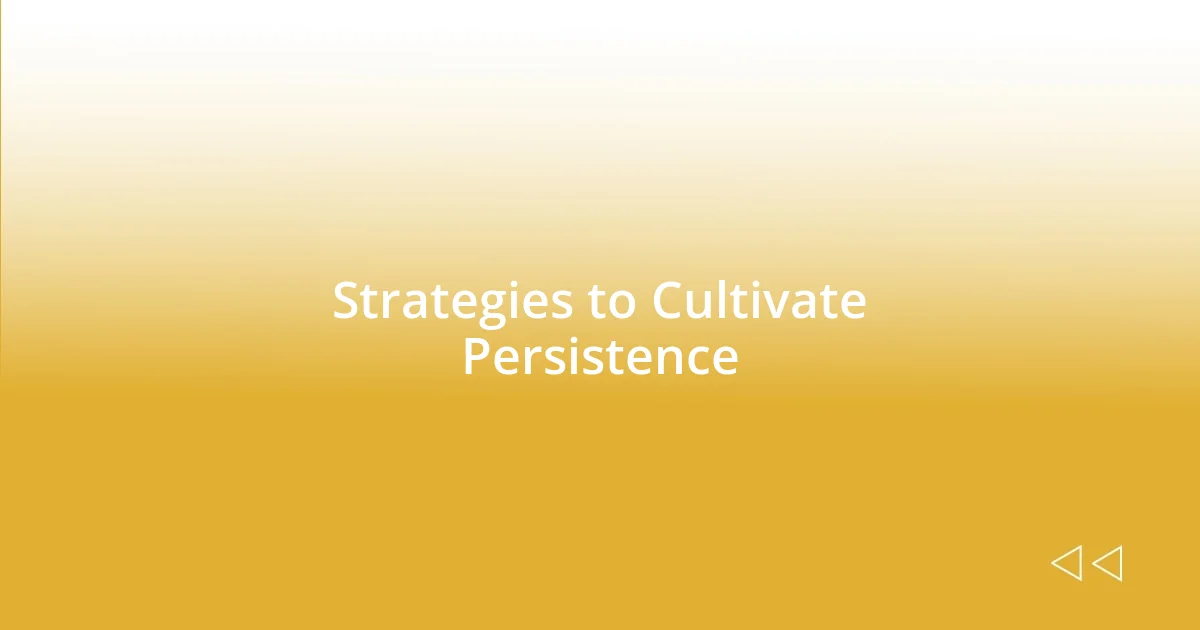
Strategies to Cultivate Persistence
Nurturing a habit of persistence often starts with setting realistic, achievable goals. I remember when I decided to tackle my public speaking fears. Instead of jumping straight into big presentations, I broke it down—first, I practiced speaking aloud in front of my family, then moved on to small groups. This gradual approach helped me build confidence and persistence. It made the daunting task feel more manageable and reminded me that progress is often a series of small wins.
Another effective strategy is to establish a routine that keeps you locked into the process. When I was learning to bake, I initially stumbled over complex recipes. To combat frustration, I committed to one baking session every Saturday. This consistency allowed me to embrace mistakes in a low-stakes environment. It was liberating to realize that each misstep was a stepping stone rather than a roadblock—they led me to countless delicious treats and, importantly, honed my persistence.
Lastly, I’ve found that reflecting on past successes can fuel future persistence. Think about it: Have there been moments when you thought you couldn’t go on but pushed through anyway? I often revisit the memory of finishing my first novel. At times, the words felt stuck, and I doubted my abilities. But each time I flipped through those pages, I was reminded of my resilience. That sense of accomplishment not only energizes me for new challenges but also reinforces the idea that persistence is a muscle we continuously build through experience.
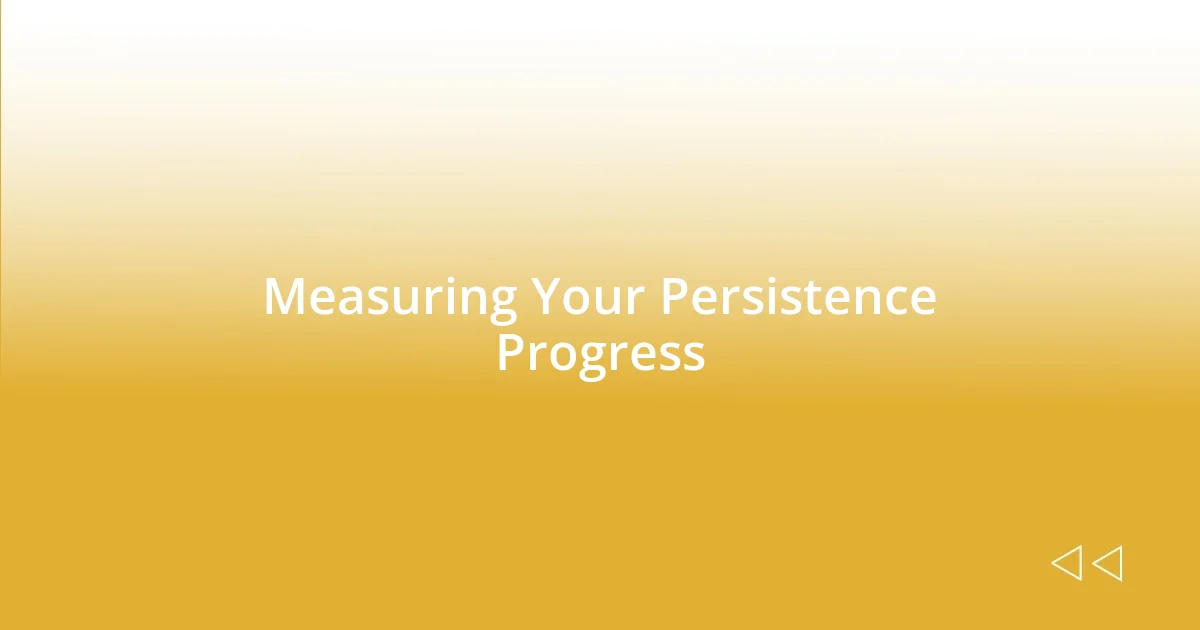
Measuring Your Persistence Progress
Tracking your persistence progress can feel like a journey of self-discovery. I recall a time when I decided to manifest my persistence through journaling. Each week, I recorded not only my goals but also my feelings about the process—successes, failures, or even days when I felt like giving up. Looking back at these entries, I often realize how far I’ve come, reinforcing the idea that monitoring our thoughts helps us understand our resilience better.
Sometimes, I find it helpful to set small milestones along the way. I remember preparing for a marathon; it wasn’t just about the race day itself but the little victories leading up to it. Every time I hit a distance goal, even if it was just one more mile than the week before, it boosted my motivation. I often wonder, how can we celebrate these small wins more effectively? By acknowledging these achievements, we create a cycle of positive reinforcement that fuels our determination.
Another method I’ve embraced is seeking feedback from others. While training for that marathon, I joined a running group. We would share our weekly challenges and triumphs, and this support system helped me stay accountable. Reflecting together on our experiences made me realize that persistence is a shared journey. If you’ve ever felt alone in your struggles, think about how engaging with others might reframe your perspective on progress. Does it ignite a new sense of commitment? In my case, it certainly did.
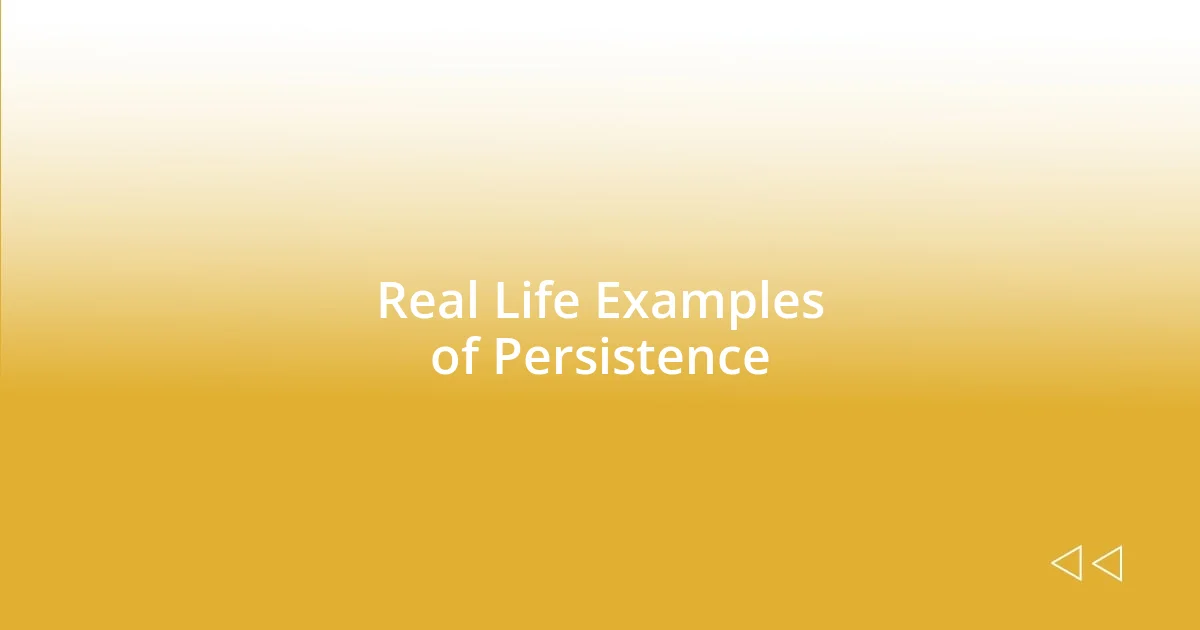
Real Life Examples of Persistence
Running a business can truly test one’s persistence. I recall a particularly tough patch when my startup faced overwhelming competition. Sales were plummeting, and I seriously considered throwing in the towel. Instead, I decided to pivot my approach. Through countless late nights and brainstorming sessions with my team, we revamped our marketing strategy. It wasn’t easy, but that sheer determination transformed our fortunes, illustrating how resilience can turn obstacles into opportunities. Have you ever been at a crossroads like this?
Think about athletes; they embody persistence in profound ways. Take Serena Williams, for instance. After facing life-altering challenges, including serious injuries and personal hurdles, she consistently returned to the court, proving time and again that her passion for the game was greater than any setback. Her story inspires many of us to push through adversity. I often wonder about the lessons we can draw from such dedication. What if we approached our challenges with the same unwavering commitment?
Then there’s the inspiring tale of Thomas Edison, whose relentless pursuit of invention led to the creation of the light bulb. Do you know how many times he failed before achieving success? Over a thousand attempts! Each failure was a lesson learned, a small bit of knowledge gathered. I can’t help but admire that spirit. It’s a reminder to view our failures not as endpoints but as essential parts of the journey. Isn’t it refreshing to consider that persistence itself can be transformative, shaping our paths in unexpected ways?


